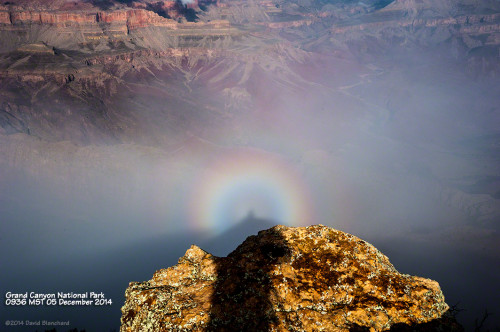It’s been a dry autumn in northern Arizona but a recent storm brought moderate rainfall amounts to much of the area. This was greatly appreciated as the trails were becoming dry and dusty and wildfires were beginning to pop again.
But even more important—from the perspective of a photographer—was the possibility of fog across northern Arizona, especially in and near the Grand Canyon. Last year, a major rain event resulted in a moist boundary layer that persisted for many days and led to widespread fog and a very photogenic fog event in the Grand Canyon.
The possibility existed that this could happen again so early Friday morning I arose before dawn and checked the weather conditions. Everything looked good so I drove up to the South Rim of the Grand Canyon. The best fog was located in the Little Colorado River valley and to the east of the Grand Canyon. The fog was slowly pushing westward and then spilling over the edge of the canyon and evaporating as it descended.

Slowly the canyon began to develop fog within the depths that would at times race upwards to the rim. When these patches of fog were located directly opposite the direction of the sun, a Glory and Brocken Spectre would appear. I was shooting images with a 10 second interval and assembled these into a short video showing the fog spilling over the edge as well as the appearance and disappearance of the glory several times.
Grand Canyon fog.
Low-level moisture remains plentiful across the region and with the development of a large area of high pressure aloft and a thermal inversion the chances of fog in the Grand Canyon will continue for the next few days.
I’ll be there.